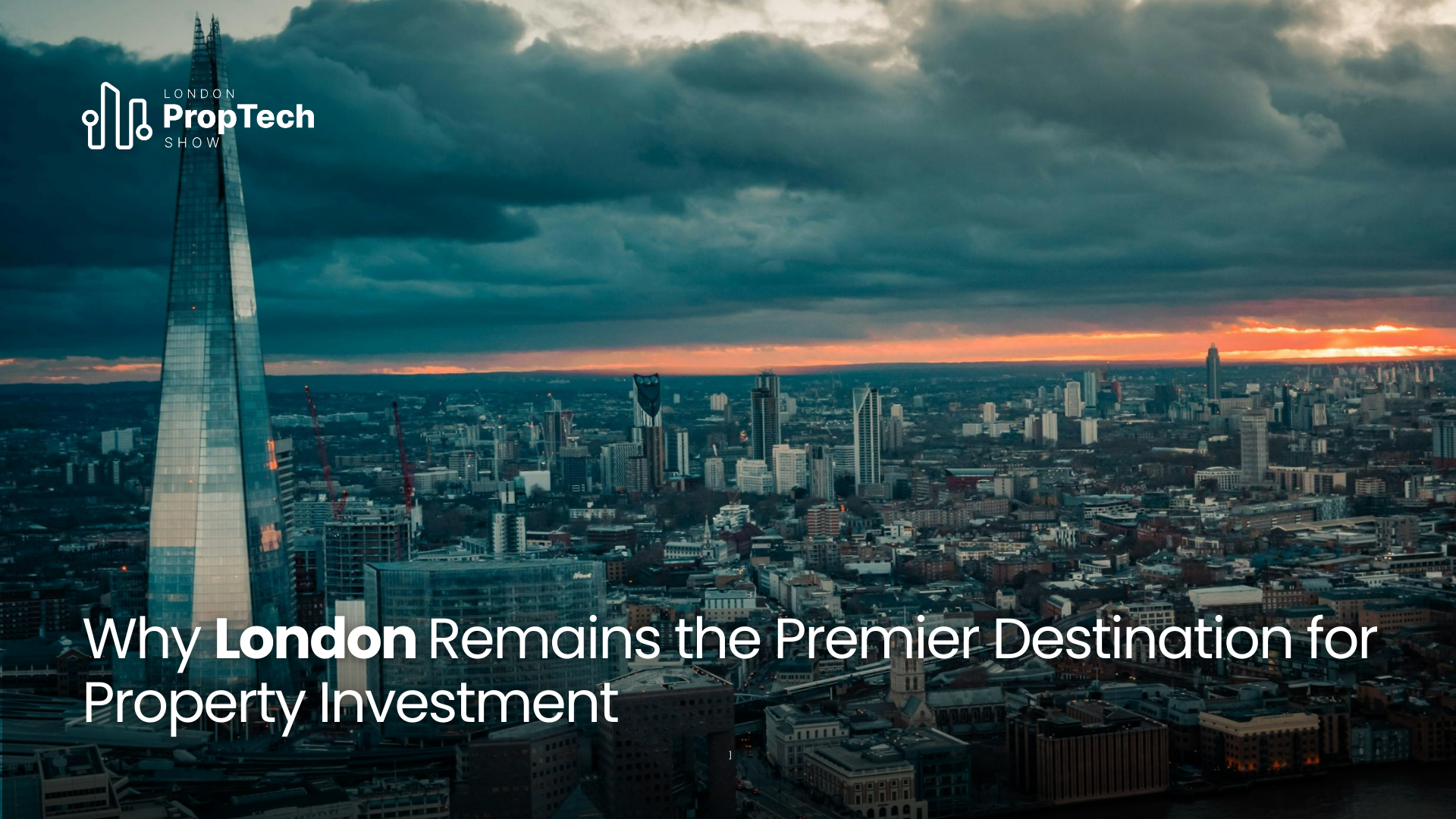London’s property market remains a global beacon for real estate investment, standing resilient despite rising costs and global economic uncertainties. As one of the most dynamic financial hubs in the world, the city combines a unique blend of historic stability, cutting-edge innovation, and continuous regeneration, offering investors long-term growth potential backed by robust market fundamentals.
London’s Global Financial Leadership
“Around 85% of the world’s financial institutions have a presence in London.” (City of London Corporation)
London’s status as the premier international financial centre underpins its commercial and residential property markets. With a dense network of multinational banks, insurance companies, and asset managers, London attracts sustained inflows of capital which support continuous demand for office spaces and high-quality residential properties. The city’s fintech ecosystem, ranking among the world’s top five, draws innovative firms and highly skilled professionals, sustaining an active leasing market and driving premium rental values.
This concentration creates a virtuous cycle: international firms require office space and housing, which supports property values and favours investors. The presence of this globally connected financial fabric is a critical factor that differentiates London from other major urban property markets.
Proven Economic Resilience
“London’s real estate market has rebounded from previous downturns quicker than many other cities.” (Savills report)
The capital has historically shown remarkable resilience in the face of economic shocks. Following the 2008 global financial crisis, London’s property values and transaction volumes recovered more quickly than counterparts across Europe and Asia. More recently, despite Brexit-related uncertainty and the COVID-19 pandemic, the market demonstrated a strong rebound. The Coutts London Prime Property Index Q2 2025 reported a 7.4% rise in prime London property prices in the second quarter alone, resulting in a 2.3% increase year-on-year (Coutts, 2025).
Notably, the outer prime markets such as Hammersmith, Chiswick, Wimbledon, Richmond, and Barnes have been leading price growth, supported by rising wages and stable employment figures. Despite some slowdowns in central prime districts like Knightsbridge and Chelsea with prices still 17-20% below their historical peaks, premium locations continue to attract interest due to their long-term capital growth potential.
Prime and Diverse Investment Locations
London’s property market offers unparalleled diversity. Prime locations such as Kensington, Chelsea, and the City of London maintain low vacancy rates and above-average rental yields. These areas accommodate a cosmopolitan tenant base including expatriates, international students, and corporate clients, which ensures healthy occupancy and rent growth.
Beyond established prime districts, regeneration zones such as Nine Elms and Stratford are reshaping investment opportunities. These areas benefit from ongoing infrastructure investment and urban renewal, providing comparatively affordable entry points. Investors targeting medium- to long-term growth are increasingly attracted to these emerging hubs as they mature into fully integrated residential and commercial communities.
This diversification enables investors to choose strategies aligned with their risk profiles and hold periods whether it be luxury, stable income in prime areas or value appreciation through regeneration projects.
Adapting to Market and Workforce Changes
The pandemic has accelerated changes in working habits with hybrid and remote models now entrenched in many organisations. This shift has transformed demand for commercial real estate, with a move away from traditional office models toward flexible, mixed-use workspaces.
London’s market is adapting swiftly, with adaptive reuse projects converting older office blocks into residential or co-working spaces, preserving asset value and generating new income streams. Prime offices with modern ESG-compliant features outperform others, as corporates align their real estate strategies with sustainability goals while meeting new employee expectations.
For investors, this flexibility presents opportunities to enhance income resilience by repositioning assets and capturing emerging market segments.
Buy-to-Let and Rental Growth Dynamics
“Rental prices in London are climbing, incentivising buy-to-let investors to consider long-term gains against the backdrop of high purchase costs.”
The residential rental market in London reflects strong tenant demand coupled with constrained supply. Annual rental growth in prime areas often exceeds 5%, further supported by new transport links like the Elizabeth Line, which enhance accessibility and desirability of peripheral neighbourhoods (Coutts, 2025).
High demand from global professionals and domestic renters underpins stable occupancy rates. The private rental sector in London benefits from persistent under-supply of affordable homes, which, combined with rising rents, incentivises buy-to-let investors despite elevated initial purchase prices.
Robust Foreign Capital Inflows
International investors remain a fundamental driver of London’s real estate market. The UK’s transparent regulatory environment, comprehensive legal protections, and relative currency advantages continue to attract capital predominantly from the US, China, and the Middle East.
The relative weakness of sterling against major currencies such as the US dollar and euro enhances purchasing power, encouraging acquisition of prime assets. Data from Mordor Intelligence highlights sustained interest and increasing volumes of cross-border investment despite global geopolitical uncertainties (Mordor Intelligence, 2025).
Institutional Investment and Commercial Market Strength
Institutional investors and large funds dominate London’s commercial real estate landscape, maintaining a competitive bidding environment for quality assets. Their focus on prime offices, logistics hubs, and build-to-rent developments ensures continued capital expenditure on maintaining and upgrading these properties.
Investment volumes in commercial properties remain strong, especially in London and the South East, with institutional investors prioritising best-in-class assets that offer long-term income stability and growth potential. The focus on quality creates a market with scarcity value, benefiting owners and investors.
Regeneration and Infrastructure Projects Driving Value
Major regeneration schemes are reshaping London’s urban and investment landscape. The Battersea Power Station redevelopment and Docklands regeneration exemplify the city’s evolving appeal, blending heritage with modern architecture and offering new residential and commercial opportunities.
Infrastructure projects such as the Elizabeth Line have redefined London's connectivity, opening up emerging hubs for investment by reducing travel times and improving accessibility. As a result, property appreciation is extending beyond traditional central London, diversifying risk and broadening the investment opportunity set (Capstone72, 2025).
Embracing Sustainability in Real Estate Investments
Sustainability has become a central pillar of investment decision-making. Eco-efficient developments with green certifications command increased premiums, benefit from lower operational costs, and reflect growing occupier and investor preferences.
London’s ambitious net-zero targets and environmental policies incentivise developers and investors to prioritise ESG-compliant projects. This shift not only aligns with regulatory expectations but also positions London as a future-proof market prepared for evolving social and environmental priorities (PwC Emerging Trends Report, 2025).
Key Investment Takeaways
- Market Stability: London offers a robust legal and regulatory framework, a resilient economy, and strong institutional backing unmatched in many global cities.
- Portfolio Diversity: Investors can tailor exposure across luxury prime markets and dynamic regeneration zones aligned with specific risk-return profiles.
- Rental Growth: Rising rents and supply-demand imbalances underpin steady buy-to-let returns.
- International Confidence: Consistent foreign capital inflows remain a cornerstone of market demand and liquidity.
- Future-Focused: Adapting to hybrid working models and integrating ESG criteria secures London’s position as a long-term leader in real estate investment.
Conclusion
“While rising prices may seem daunting, the factors contributing to London’s enduring appeal for investors are multi-faceted.”
For global investors and business leaders, London is more than a property market; it is a resilient financial ecosystem that combines economic stability, global connectivity, innovation, and sustainability. Its unique blend of cultural vibrancy and strong fundamentals secures its place as Europe’s most attractive real estate investment capital and a prime choice for long-term portfolios.


